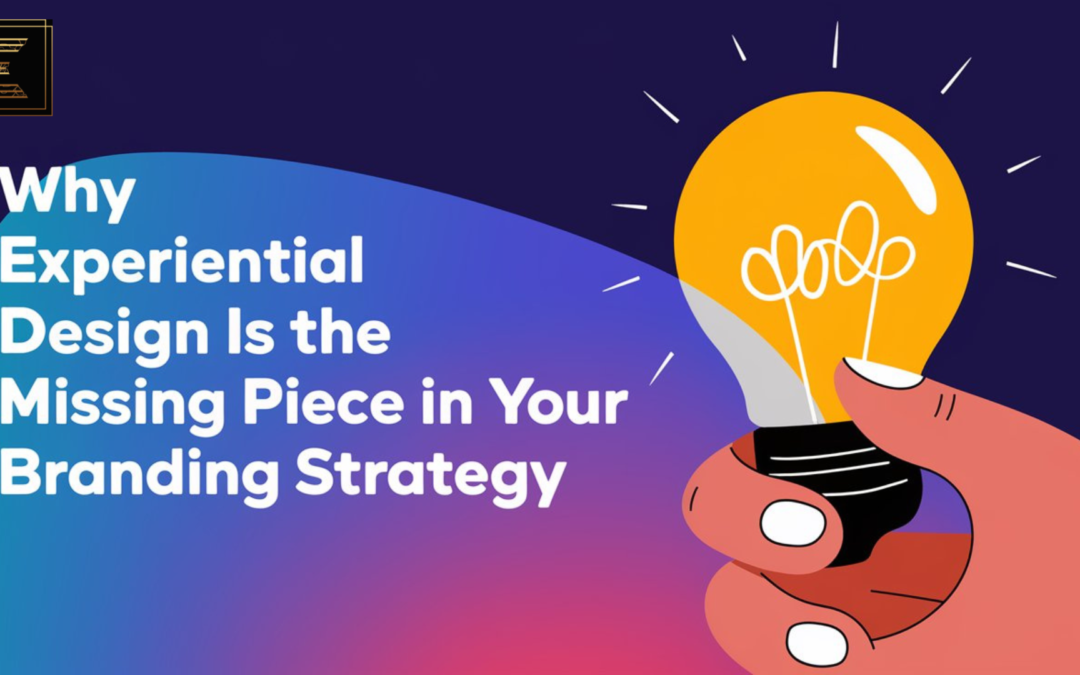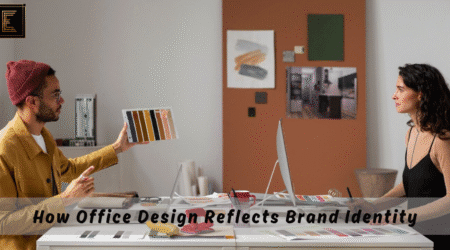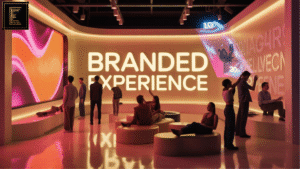In today’s competitive business environment, brands are striving to build deeper connections with their customers. One powerful way to achieve this is through an Experiential Design Strategy for Branding. Yet many businesses are still asking: Why is experiential design necessary for branding?
Experiential strategy focuses on creating emotional connections between customers and brands through memorable, interactive moments. By leveraging the importance of experiential design, companies can differentiate themselves, foster loyalty, and elevate their presence in an increasingly crowded marketplace.
“Design is the silent ambassador of your brand.” – Paul Rand
Understanding Experiential Design Strategy for Branding
Experiential brand design is more than visual aesthetics or user-friendly interfaces. It’s about shaping the entire journey a customer has with your brand—from physical spaces and digital experiences to customer service and beyond.
When integrated effectively, an Experiential Branding Strategy can engage all five senses, leaving a lasting impact that traditional advertising struggles to achieve.
The rise of experiential marketing highlights a shift in consumer expectations: people no longer want to passively consume content—they crave authenticity and engagement. This is where the Experiential Design Strategy for Branding truly shines, creating immersive experiences that people remember and share.
Why Experiential Design is Necessary for Branding
“People ignore design that ignores people.” – Frank Chimero
In a world overflowing with ads and messages, making a memorable impression is key. So, why is experiential design necessary for branding?
Because it allows brands to:
- Build emotional connections with their audience
- Increase customer engagement and interaction
- Deliver personalized, memorable experiences
- Improve brand recall through multi-sensory design
Experiential brand design creates environments where customers feel understood and appreciated. It’s no longer just about selling a product—it’s about immersing customers in a world that reflects their values, dreams, and emotions.
The Importance of Experiential Design in Branding
“Good design is good business.” – Thomas Watson Jr.
The importance of experiential design lies in its ability to breathe life into your brand. Whether it’s through a thoughtfully designed retail space, an interactive pop-up, or a dynamic digital platform, Experiential Branding Strategy makes your brand more relatable and unforgettable.
A well-crafted experiential strategy helps you:
- Deliver a unique, cohesive brand narrative
- Convert passive viewers into active participants
- Turn routine customer journeys into transformational moments
Put simply, experiential design ensures that your brand isn’t just seen—it’s felt. This emotional resonance builds long-term brand loyalty and transforms customers into advocates.
How Experiential Design Shapes Customer Perception
“Design is intelligence made visible.” – Alina Wheeler
Perception is powerful. When your brand is perceived as innovative and customer-centric, your reputation becomes your strength. An Experiential Design Strategy for Branding helps craft that perception by allowing customers to engage meaningfully with your brand.
Whether it’s a hands-on product demo, a curated store atmosphere, or a captivating digital experience, experiential brand design ensures your brand stands out in people’s memories.
Example: A brand hosting a themed pop-up store where customers can touch, interact, and even co-create their own products builds a stronger emotional bond than one relying solely on static advertisements.
The Role of Technology in Experiential Design
The growth of technology is reshaping the landscape of Experiential Branding Strategy. Today’s tools—such as AR (Augmented Reality) and VR (Virtual Reality)—allow brands to design immersive experiences that feel magical and intuitive.
Here’s how technology powers experiential strategy:
- VR lets users test products virtually or step into digital brand environments.
- AR adds layers of interaction to physical spaces or print materials.
- Interactive displays and smart devices elevate the in-store journey.
These innovations offer more than just “wow” moments—they deepen engagement, which is the ultimate goal of any experiential strategy.
“Technology is best when it brings people together.” – Matt Mullenweg
Why Your Brand Needs Experiential Design
In a noisy marketplace, standing out means offering something real. Customers want more than just products—they want purpose, passion, and personal connection.
This is exactly why Experiential Design is necessary for branding. It:
- Builds authentic connections
- Enhances the customer journey
- Encourages emotional investment
- Increases word-of-mouth and organic promotion
By embracing experiential brand design, companies show they value their audience’s time, attention, and emotions. When done right, it transforms customers into active participants in your brand’s story.
“The details are not the details. They make the design.” – Charles Eames
The Future of Branding and Experiential Design
“Design is not just what it looks like and feels like. Design is how it works.” – Steve Jobs
As expectations evolve, so must your approach. The future of branding lies in Experiential Branding Strategy that’s customized, immersive, and built with purpose.
The boundaries between physical and digital will continue to blur. From smart stores and AI-powered personalization to virtual showrooms, the opportunities are endless. And behind all these innovations? A well-thought-out experiential strategy that puts your customer at the center.
Conclusion
Experiential Design Strategy for Branding is no longer a nice-to-have—it’s a must. It’s the missing link between brand awareness and brand loyalty, offering a richer, more immersive way to connect with your audience.
When implemented well, it sets your brand apart and ensures it lives in the hearts and minds of your customers.
As a leading interior design company, Elegantize Designs understands the power of experiential environments. Whether it’s a retail store, brand activation, or digital space, we help brands craft unforgettable experiences. Let us help you bring your brand story to life in a way that engages, excites, and inspires.
FAQs
1. What is experiential design in branding?
Experiential design in branding involves creating immersive, interactive, and emotionally resonant experiences that go beyond aesthetics. It connects customers to the brand on a deeper level through a strategic experiential brand design approach.
2. How does experiential design improve customer engagement?
By offering personalized, hands-on experiences, experiential strategy makes customers feel involved, leading to deeper engagement and lasting loyalty.
3. Why is experiential design necessary for branding?
Experiential design allows brands to stand out by building emotional connections, offering memorable interactions, and improving brand recall—all key aspects of a successful Experiential Branding Strategy.
4. How can technology enhance experiential design?
Tools like AR and VR amplify experiential strategy by making brand experiences more immersive and engaging, helping customers interact with products and services in innovative ways.
5. How can Elegantize Designs help with experiential branding?
Elegantize Designs creates customized interior and digital environments that align with your brand values and goals. From concept to execution, we help design immersive brand experiences through thoughtful Experiential Design Strategy for Branding.







